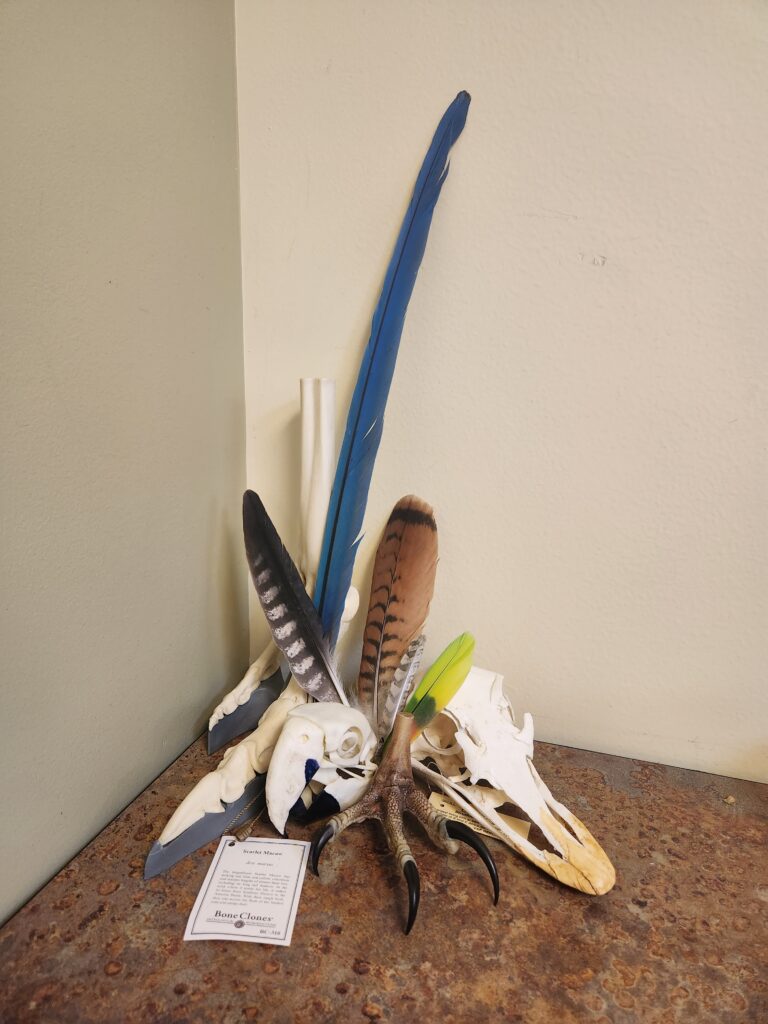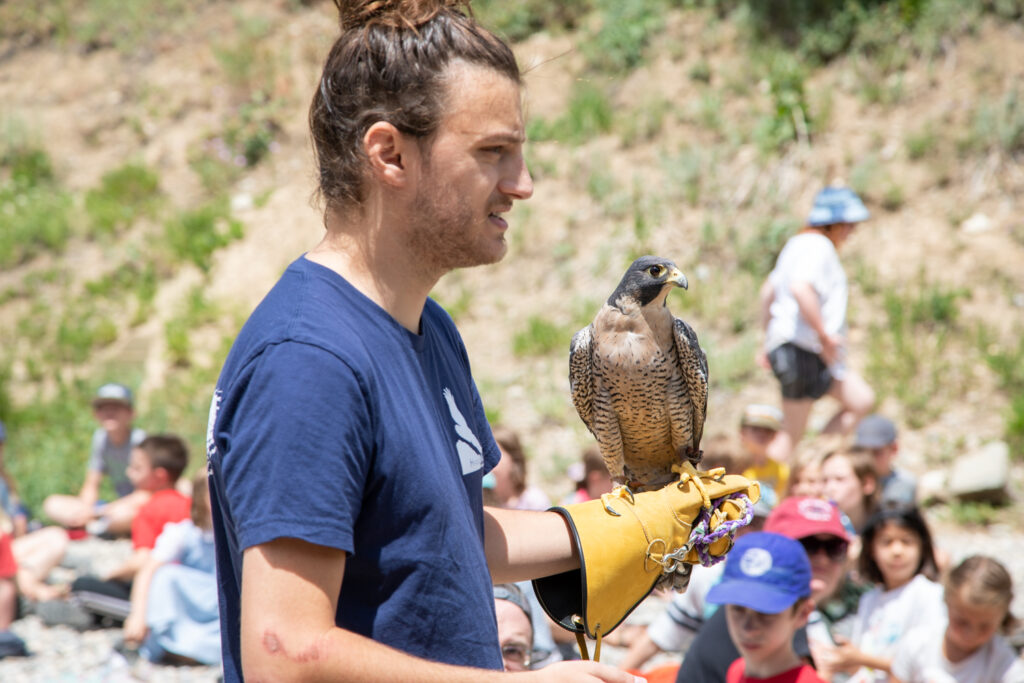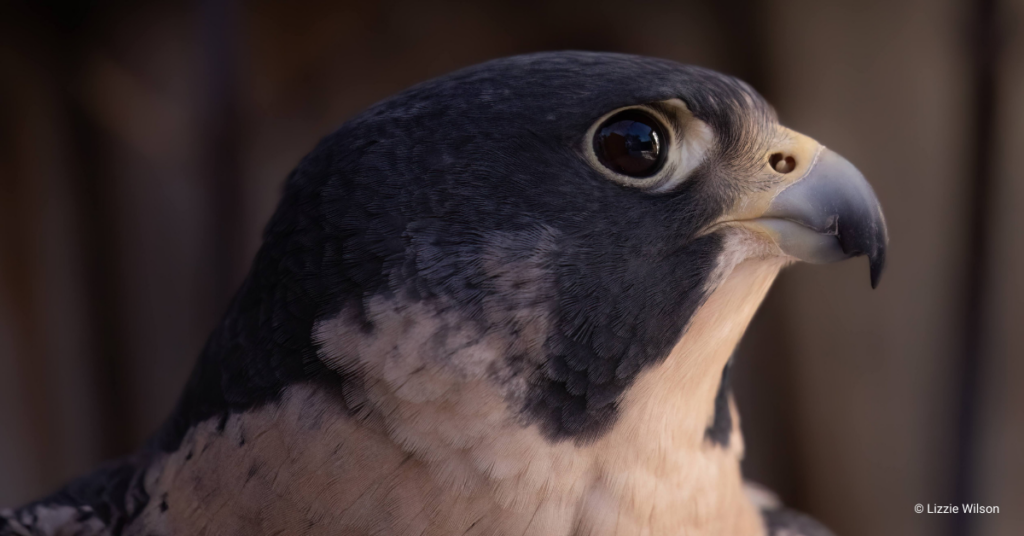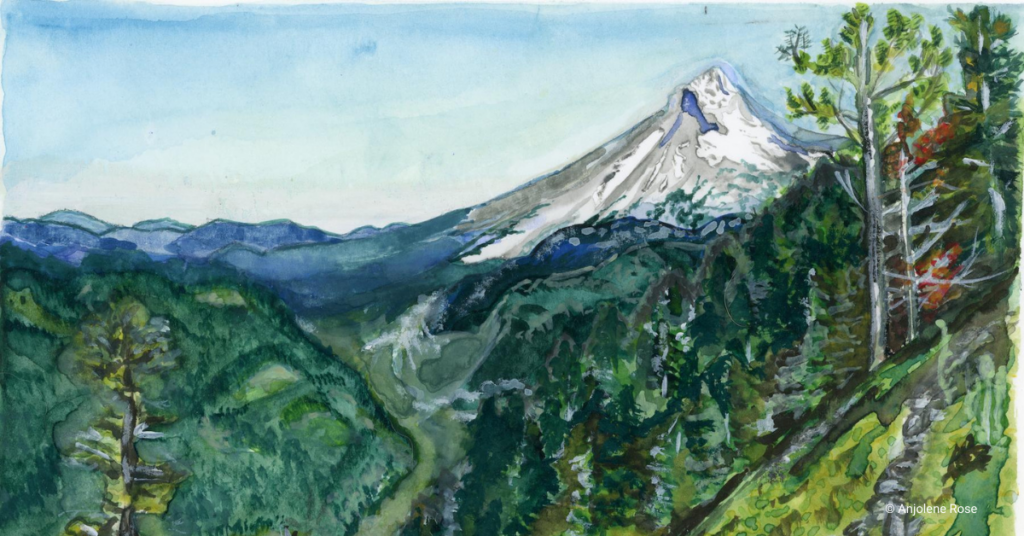We are offering a new educational program to help close the nature gap by making information about raptors accessible to people on the autism spectrum and with other special and diverse needs. I’ve been able to present this program and am excited about its potential to include more young and older people in our education offerings.
I developed the spectrum program after spending time in both formal and informal education settings, where my favorite time teaching always ended up being with special and diverse needs groups. During my time at the Hogle Zoo, I oversaw its special and diverse needs programming, including programs for those on the autism spectrum. After my time at the zoo came to an end during the pandemic, I worked as a paraeducator in an Applied Behavior Analytics-focused classroom for elementary students with autism. I learned more about how to teach and engage learners on different levels. When I came to HawkWatch International, I knew I wanted to develop a program specifically for people on the autism spectrum because we did not have one. When we decided to work toward closing the nature gap, this program was an ideal fit.
The goal of our spectrum program is to teach that raptors are carnivores who have three sharps that set them apart from other birds. Simply saying that is not particularly fun, and learners may not remember it. This program uses four stations to make the information engaging and memorable:
- Feathers
- Food
- Talons and feet
- Skulls
Each station compares ostriches (not raptors), parrots (not raptors), and eagles, owls, and falcons (all raptors) to each other.

Feathers Station
Feathers separate birds from other animals because they are the only animals that have them. At the feathers station, learners touch real feathers from ostriches, parrots, and several raptors. Because it is dangerous to touch wild animals, for both the people and the animals, learners don’t touch our raptor ambassadors. So, the feather station gives learners the opportunity to feel birds without making any birds uncomfortable. We teach about how feathers help birds and offer a matching game for learners to practice matching a feather to the type of bird it came from.
Food Station
Everyone needs to eat, including feathered friends. Using lunch boxes and toys, learners sort food for ostriches, parrots, raptors, and themselves. This station illustrates an important feature of raptors: they are carnivores. Their balanced diet does not include any fruits or veggies, like other birds and humans.
Talons and Feet Station
Raptors use their feet and sharp talons to catch and kill their prey, while other birds often use their beaks. This station includes replicas of birds’ feet to show how they have adapted to help birds survive. Learners have the chance to examine the feet up close, looking at and touching the replicas.
Skulls Station
Skulls offer learners a two-for-one opportunity to experience the three sharps. Learners see and feel replicas of skulls, as we teach that raptors have sharp curved beaks and sharp eyesight. This station compares raptor skulls to parrot and ostrich skulls to show how each bird uses a beak.
Raptor Ambassador

After visiting the four stations, learners come back together so we can introduce one of our raptor ambassadors. This is often the highlight of the program, as we tell the bird’s back story, share fun facts, and point out the three sharps. Learners can ask any questions they have about the bird or raptors in general. Afterward, we arrange for any interested learners to pose for a photo with the raptor ambassador.
Book a Program
We are excited to have delivered our first spectrum program this year and have more planned in 2024! The spectrum program works well for groups of various sizes. Stations can be prepared for small groups or a whole class. Depending on the number of educators and learners, all four stations may be available to visit at the same time, so learners can visit in any order. The program was designed to be flexible and can be differentiated for all ability levels, both ahead of time and during the program.
If you are interested in scheduling a program, visit here to get started. If you have questions, including about how to adapt the program for your learners, feel free to email me at cbutler@hawkwatch.org.
This program and our work to close the nature gap would not be possible without funding from our amazing sponsors: Salt Lake County ZAP, POWER Engineers, David Kelby Johnson Memorial Foundation, George S. and Dolores Doré Eccles Foundation, Janet T. Dee and Lawrence T. Dee Foundation, and Rocky Mountain Power Foundation.
This blog was written by Chris Butler, HWI’s Field Educator. You can learn more about Chris here.



